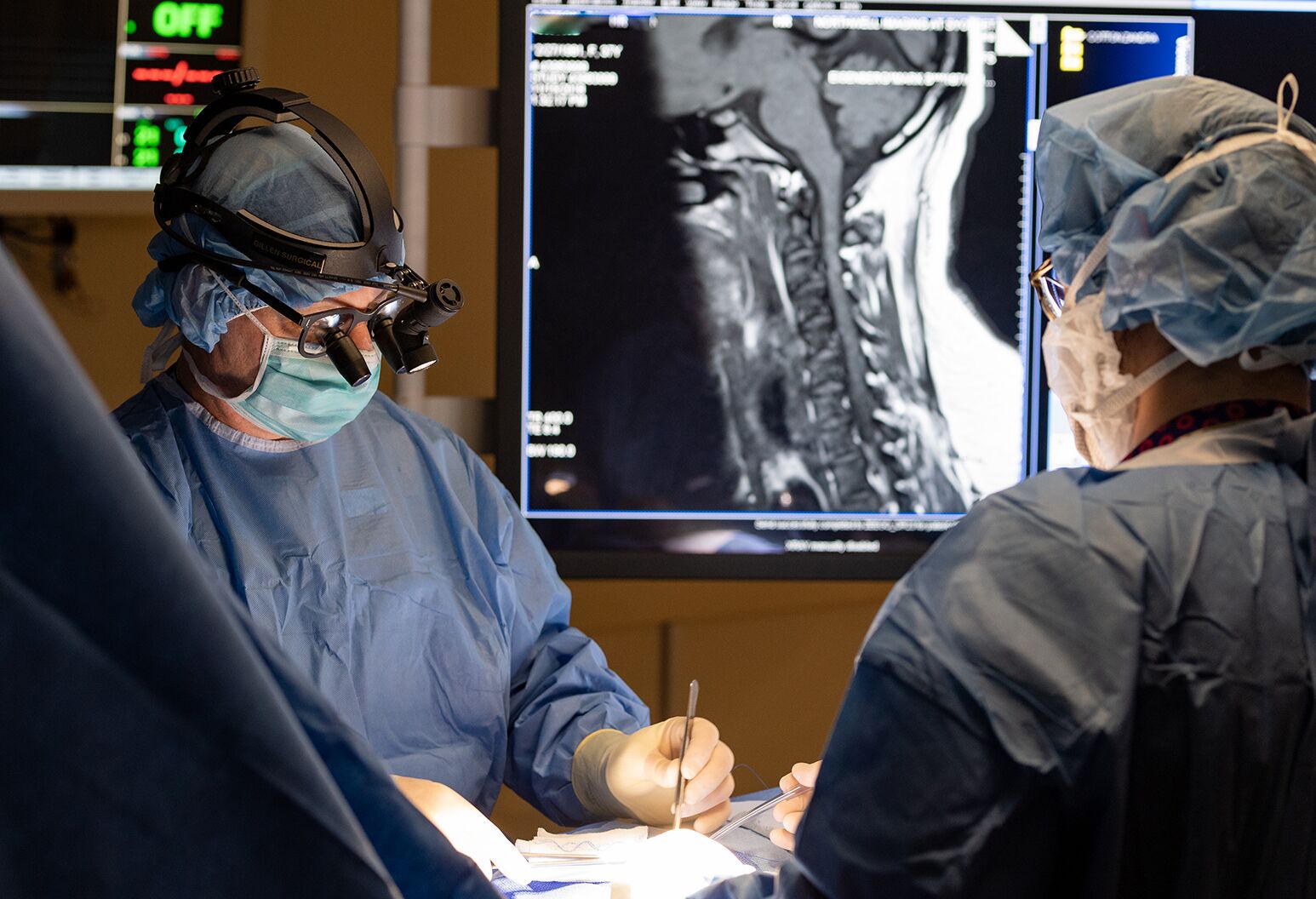Tips for Recuperation After Surgical Procedure with the Best Spine Surgeons in St Louis MO
Tips for Recuperation After Surgical Procedure with the Best Spine Surgeons in St Louis MO
Blog Article
An Overview of Spinal Column Conditions That Commonly Cause Surgical Therapies
Spine problems such as herniated discs, spine stenosis, and degenerative disc condition often require surgical treatments when conventional treatments fall short to minimize persistent signs and symptoms. Recognizing the nuances of each problem and the matching surgical alternatives, such as discectomy or spine blend, is vital for efficient monitoring.
Herniated Discs
Although lots of individuals with herniated discs might find alleviation through traditional treatments, surgery comes to be a required factor to consider when signs persist or get worse - best spine surgeons in st louis mo. A herniated disc occurs when the soft inner gel of a back disc sticks out through its outer layer, possibly leading and pressing nearby nerves to discomfort, numbness, or weakness in the extremities
Conventional management commonly includes physical treatment, discomfort medications, and corticosteroid shots, which intend to decrease inflammation and boost function. In instances where these approaches fail to minimize devastating signs and symptoms, surgical options may be checked out.
One of the most usual operation for herniated discs is a discectomy, which includes the removal of the herniated part of the disc to soothe stress on the affected nerve root. In more severe situations, spine combination might be necessary to maintain the influenced vertebrae.
Patients are advised to talk about the prospective dangers and benefits of surgical treatment with their health care copyright to make an educated choice. Inevitably, the objective of any kind of surgical treatment is to recover feature, reduce pain, and improve overall lifestyle for individuals experiencing herniated discs.
Spinal Constriction
Back constriction happens when the areas within the spine narrow, leading to increased stress on the back cable and nerves. This condition can develop in numerous areas of the spinal column, including the back and cervical locations, commonly because of age-related changes, such as degenerative disc disease, joint inflammation, or enlarging of tendons.
People with spine stenosis might offer with signs that include discomfort, tingling, tingling, or weak point, mostly in the legs or arms. These signs and symptoms can be worsened by activities that entail standing or strolling, frequently leading people to seek relief via conventional therapies like physical therapy, medications, or epidural steroid shots.
Nevertheless, when these non-surgical treatments fail to offer ample relief, surgical choices might be considered. Typical medical treatments for back stenosis include laminectomy, which includes the elimination of component of the vertebra to alleviate pressure, and spinal combination, which maintains the damaged location.
Spondylolisthesis
Spondylolisthesis occurs when one vertebra slips ahead over one more, causing imbalance of the back. This problem can result from various aspects, consisting of genetic issues, injury, or degenerative adjustments in the spinal column. It is most generally observed in the back area, specifically at the L4-L5 and L5-S1 degrees.

When non-surgical strategies fail to eliminate symptoms or when considerable nerve compression is existing, surgical intervention might be required. Surgical choices can consist of spine blend or decompression procedures, intended at restoring alignment and relieving neurological symptoms.
Degenerative Disc Illness

The problem can be identified through a mix of scientific examination, imaging studies, and patient background. When these techniques fail to give ample relief, surgical treatments may be taken into consideration.
Surgical choices for DDD may consist of back combination or synthetic disc replacement, focused on stabilizing the impacted sector and minimizing discomfort (best spine surgeons in st louis mo). Eventually, the selection of treatment is embellished, taking into consideration the intensity of the problem, client wellness, and lifestyle aspects
Back Tumors

What factors add to the advancement of lumps within the back, and how do they manifest in clients? Spine growths can develop from numerous variables, consisting of hereditary predisposition, environmental influences, and pre-existing medical conditions. They can be categorized as primary tumors, originating in the spine, or secondary tumors, which spread from other regions of the body. Patients may present with a variety of signs, including localized pain, neurological deficits, weakness, or adjustments in digestive tract and bladder feature, relying on the lump's reference dimension and area.
Medical diagnosis normally includes imaging studies such as MRI or CT checks, which aid define the tumor's features and effect on surrounding structures. In analyzing therapy options, the lump's area, type, and quality are essential factors to consider. Surgical intervention might be required to alleviate signs and symptoms, acquire a biopsy, or get rid of the growth entirely. The objective of surgery is usually to decompress neural components and support the back. Adjuvant therapies, consisting of radiation or chemotherapy, might also be needed depending on the growth's nature. Early detection and intervention are vital for optimizing end results in clients with back tumors.
Conclusion
In summary, spinal column problems such as herniated discs, back stenosis, spondylolisthesis, degenerative disc illness, and spine lumps frequently require medical treatment as a result of their potential to cause considerable discomfort and useful problems. While traditional treatments may provide momentary alleviation, medical alternatives come to be critical when symptoms persist or intensify. Prompt medical diagnosis and treatment play a critical duty in recovering feature and boosting the top quality of life for damaged people, emphasizing the relevance of thorough back treatment.

Report this page